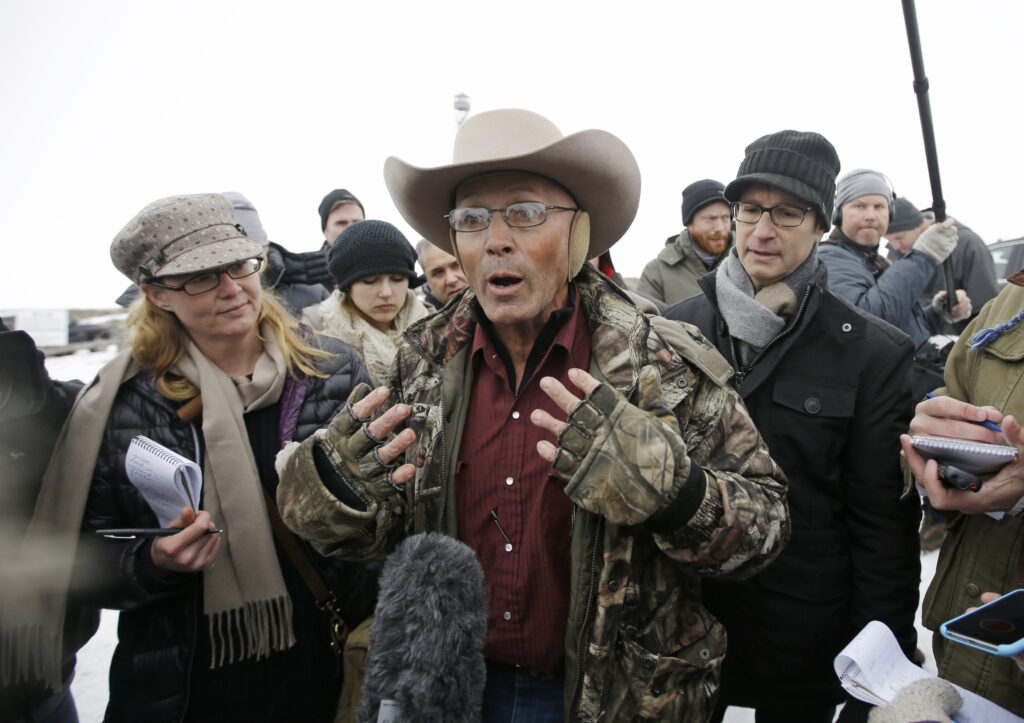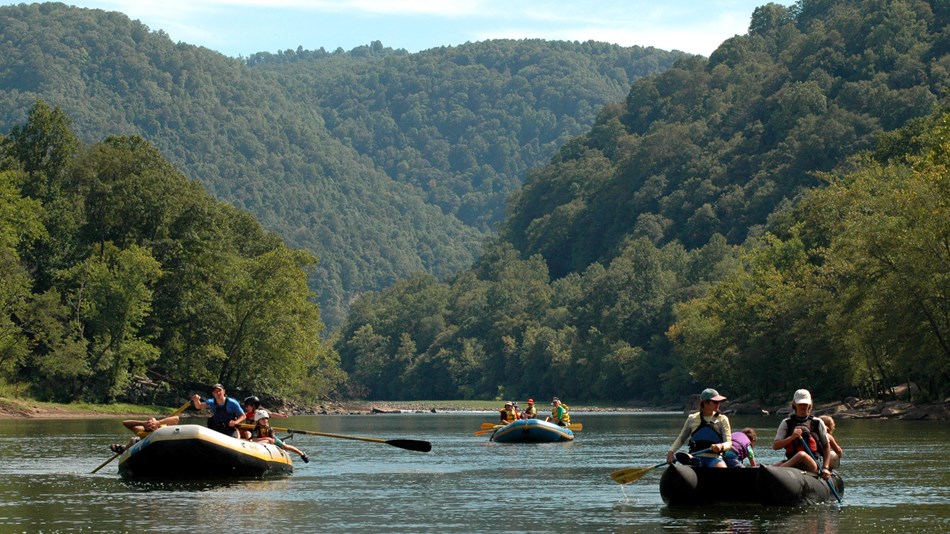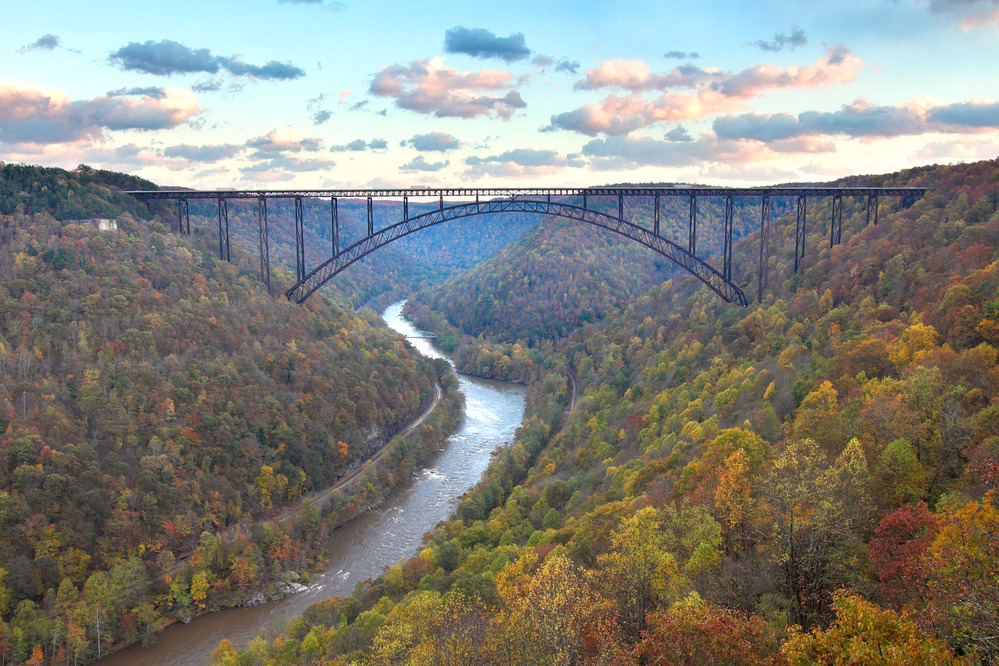WASHINGTON – Historic times call for historic action. Much like when Teddy Roosevelt set aside those first 230 million acres of public land during his time in office, now is the time U.S. lawmakers are fighting to further protect those lands and the ones added since.
When President Trump tweeted his support for permanently funding the Land and Water Conservation Fund in early March, Sen. Joe Manchin (D-W.Va.), Sen. Cory Gardner (R-Colo.) and a bipartisan group of their colleagues sprung into action. A project of Manchin’s since being elected to the Senate in 2010, the puzzle pieces finally fit together and S. 3422, the Great American Outdoors Act, was formally introduced March 9. In addition to Manchin and Gardner, 53 other senators had cosigned. Within three days it had 59 sponsors.
“This has been a priority of mine and the Democrats,” Manchin said. “I look around West Virginia at all of the things that benefited from the Land and Water Conservation Fund, whether it’s Canaan Valley, Blackwater Falls, New River Park – every county in West Virginia has benefited somehow by land being preserved through the investments of LWCF. I’ve known this group and worked with them for a long time.”
A lifelong sportsman and lover of the outdoors, Manchin has dedicated his life to public service and conservation. Now, as the Ranking Member of the Senate Energy and Natural Resources Committee, Manchin has taken the lead in overseeing the National Park System. One example of his work comes six months ago on a trip to Pearl Harbor. There he saw the depreciated state of the memorial and immediately secured funding from Assistant Secretary for Fish and Wildlife and Parks Robert Wallace and Secretary of the Interior David Bernhardt to bring it back to its former glory.
“I saw what a deteriorated state it was in and was ashamed of that,” Manchin said. “I came back and spoke to Rob Wallace and David Bernhardt, and we invested about $10 million to get that to where it should be to where every veteran and every American should be proud of the birthplace of where it all started for us to become the superpower of the world and the beacon of hope and freedom”
The GAOA will mandate that the full $900 million be given to the LWCF annually, and will also provide $9.5 billion over the next five years split between the National Park System, Bureau of Indian Education schools, U.S. Forest Service, Bureau of Land Management and the U.S. Fish and Wildlife Service, to begin addressing maintenance backlogs that have slowly accumulated. The LWCF was established by Congress in 1965, investing royalties from offshore oil and gas drilling to federal agencies as well as state and local governments for projects focused on maintaining, acquiring and restoring public land assets. After expiring Sept. 30, 2015, the LWCF was extended for three years as part of the Consolidated Appropriations Act of 2016 before expiring once again on Sept. 30, 2018. The fund was permanently reauthorized on March 12, 2019, a major win for conservation and one led by Manchin.

Although important, the LWCF has only been fully funded once since 2000, exceeding its authorized level at $995 million in 2001. Since then, on average it’s been funded less than halfway, ranging from $677 million in 2002 to $255 million in 2008. One question that arises is: Where has all of that extra money gone? Manchin was quick to point it out, noting, “$22 billion has gone in the dark black hole of the Treasury. Even though it shows that the Treasury owes the LWCF $22 billion, they’ll never see it.”
“It’s been used for everything else,” he added. “I’m saying this money should go directly for what it’s intended. It’s offshore drilling now, the revenues come not from tax dollars but production dollars and those should go back in to preserving the beauty that we have and helping acquire and maintain [it]. That’s the purpose of this. This is a legacy we could continue to build on. I think it has tremendous opportunities.
“There’s so much that needs to be done. We found the common denominator: Everybody wants to leave a legacy. This is a legacy that every person in Congress today can look forward to their children, grandchildren and great-grandchild saying, ‘Hey, my dad, my mother, my grandfather or grandmother, great-grandfather, great-grandmother, was involved in me having the opportunities to enjoy a quality of life in America.’ This preserves so many pristine places. I think this is a golden opportunity. I’m proud that we have [58] cosponsors. I think we’ll be well over 60. I’m proud of both Democrats and Republicans that we’ve risen above the politics and put policy ahead of that. I’m proud that both Mitch McConnell and Chuck Schumer have decided this is a very important piece of legislation.”
While Manchin and others in the Senate see this as politics at play, likely due to being an election year, they simply don’t care. To Manchin and his colleagues, this is not something to toy with come time to vote next Monday or Tuesday, especially when it will have a positive economic impact. As Manchin noted, “Take advantage of it.”
“If you allow politics to be the evil of the good [you’re] basically taking defeat out of the jaws of victory. It’s crazy,” he said. “The stars have lined up. If the President says he supports it, maybe he supports it because he thinks it will help some members get elected, that doesn’t bother me whatsoever. I’m proud Chuck Schumer hasn’t taken the position, ‘Well we aren’t going to give them a victory that might make them look good, and we’re going to not support this good policy.’ He’s 100% in favor. So let’s just say that good policy, in this day of toxicity that we have in politics, is going to trump politics.
“It only comes about every so often. Something like this mammoth has never happened since I’ve been here, and people say very seldom has it ever happened. Also during this downturn of our economy, if you want infrastructure this bill could bring anywhere from 15,000-30,000 people [to work] for LWCF, same as they did way back in the 30s [during] the Great Depression and FDR had the work progress programs – the WPA, CCC and all these things. As far as restoring our parks it could also produce another 100,000 plus jobs. It’s a tremendous opportunity for a lot of people to take pride in America and get back to work, but also to enjoy it for generations to come. Tremendous.”
But will Trump change his mind like he has in the past on other issues? Manchin says he doubts it.
“I’ve talked to my Republican colleagues Cory Gardner, Steve Daines and all of them, who are very much involved in this. They said they got a blessing from the President. That’s great and that’s why we want to move as fast as we can to get this accomplished and behind us,” he said.
Public land adversaries and proponents
While S. 3422 is one member shy of a supermajority, which would possibly invoke cloture, there are those in the Senate who are labeled as “anti-public land” Republicans. According to the Center for Biological Diversity’s 2017 report, there were then six such Republicans in the Senate – Mike Lee (R-Utah), Orrin Hatch (R-Utah), John Barrasso (R-Wyo.), Jeff Flake (R-Ariz.), Dean Heller (R-Nev.) and Lisa Murkowski (R-Alaska). With the 2018 election, Heller lost his re-election bid to Democrat Jacky Rosen, Flake chose not to run again and Hatch retired.
This doesn’t mean there isn’t still pushback in certain cases. However, to understand their stance one needs to look back at two of the more explosive standoffs against the federal government in recent history. Both revolved around one family: The Bundys.

In 2014, supporters of Cliven Bundy – a cattle rancher from Bunkerville, Nev. – and agents from the Bureau of Land Management were locked in a staring contest over unpaid cattle grazing fees over 21 years. After a large group of protestors occupied the Bundy’s ranch, things began to get hairy when the BLM seized Bundy’s cattle, roughed up some of his supporters and sons. Tensions eventually spilled over, and the protestors marched on the BLM’s cattle roundup. What seemed like a situation that would explode into violence ended when the then-newly confirmed BLM director Neil Kornze released the cattle. Two years later, with the Bunkerville protest still fresh, Ammon Bundy led an expedition to the Malheur National Wildlife Refuge in Harney County, Ore., illegally holding it for 40 days. That standoff did, however, end in violence as one of the longtime Bundy supporters, Robert “LaVoy” Finicum was killed by a member of the Oregon State Police during a police chase. After stumbling out of the driver’s seat into thick snow, he was shot multiple times after it was believed he was reaching for a handgun inside of his coat.

Though ending in such a way, it brought to attention how much land the federal government owns in the west. It’s that reason that there’s an understanding of those colleague’s mindsets, according to Manchin.
“I understand the ones that come from states where 90% of the state is already public land, but we won’t be going into areas and buying more land where people don’t want or need more public lands,” Manchin said. “But we’ve got to take care of what we do have. That’s been a hot topic in some of the western states. We understand that.
“They haven’t blocked [the legislation]. Even though they may not support it, might not vote for it, or haven’t endorsed it – maybe would like to endorse it, but won’t because of the politics – I feel at the end of the day we’ll still pass it with hopefully 65 votes or more.”
Where there may be those against public land legislation, there are many more voices in support of it. Nationwide, over 850 organizations have made their voices heard, coming out highly in favor of the GAOA.
“It’s unbelievable to have that many groups sponsor it and [are] trying to keep this bill as pristine as it is without tinkering around with it,” Manchin said. “People have a desire to make sure we preserve and take care of areas we’ve already acquired through LWCF, and those we will acquire as the public supports it. They don’t do anything the public doesn’t support – if the public won’t support it, it’s not forced upon them.”
Work to be done in West Virginia
While many think of Yellowstone or other big-name national parks out west, West Virginia has four areas registered with the National Park Service and two national forests. Manchin has laid out plans for how the allotted money will be used in the Mountain State.
One of the largest projects lies within the Monongahela National Forest in Pocahontas County, referred to as “Hooke Brothers.” The project will add a 367-acre parcel owned by a timber company to the forest and was ranked as the 14th highest priority land acquisition project in the country according to a release by the Energy and Natural Resources Committee. Further, according to the release, adding the parcel, “will expand the opportunities for connecting trails systems in the area,” which will benefit a wide swath of recreation enthusiasts. As for the George Washington and Jefferson National Forest, Manchin notes there’s a large backlog of work that needs to be done due to lack of funds over the years. In total, the forest projects will cost $1.67 million.
As for other plans in West Virginia, such as those involving the Appalachian Trail, New River Gorge, Gauley and Bluestone National Rivers, Harpers Ferry National Park and the Historic Preservation and Stephen T. Mather Training Centers, deferred maintenance from the 2018 fiscal year totaled more than $61.84 million.
While these natural sites are invaluable, they are a major source of revenue for the state. According to a report by the LWCF, West Virginia has received $246.2 million over the last 50 years from the fund which has gone towards protecting Canaan Valley National Wildlife Refuge, Harpers Ferry National Park, the Monongahela National Forest and New River Gorge National River. Further, $4 million in Forest Legacy Program grants have also been funded by the LWCF to help protect working forests. The report further breaks down the economic benefits West Virginia has garnered from the LWCF’s financial contributions: $9 billion in consumer spending, 91,000 jobs generating $2.4 billion in wages and salaries, $660 million annually in state and local tax revenue and $905 million in wildlife recreation spending by more than 994,000 sportsmen and women.
The same report notes that the LWCF has protected 57,000 acres in river access and 2,000 named rock climbing routes in the Gauley River and New River Gorge Recreation Area, among other projects. From this, 1.2 million visitors contribute $53 million to the local economies.

And while these are some of the biggest projects, for a lifelong outdoorsman like Manchin he knows other projects need tending to. Truly, the work will never stop nor should it, just as T.R. would have fought for. It’s a legacy he wants to build for future generations to come.
“It means everything,” Manchin said. “My best day is in the stream trout fishing, walking up and down the stream by myself. Everyone [has] their getaway or needing to recharge their battery, standing the stream in West Virginia and looking at my surroundings, maybe getting a fish now and then – I just enjoy everything about it. I enjoy hunting and fishing immensely. It’s part of my life. My kids have been involved, they go with me and now my son takes his son. It continues on, that’s what it’s all about.”
TWEET @ASpellman_DPost




